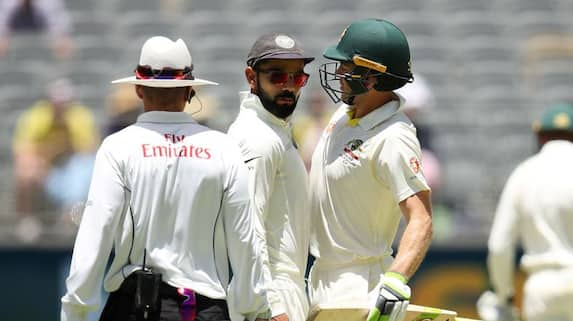Introduction
Welcome to an exploration of the most controversial cricket moments of all time! Cricket, often referred to as the gentleman’s game, has its fair share of controversies that have stirred the world of sports and its fans. In this blog post, we will dive into some of the most infamous incidents that have left a lasting impact on the sport. From match-fixing scandals that shook the very core of cricketing integrity to umpiring decisions that sparked heated debates, we will uncover the incidents that have shaped the narrative of the game.
Cricket, being a sport that unites people from different cultures and backgrounds, has seen its players caught in moments of intense pressure, leading to actions that have sparked controversies. We will shed light on incidents where players’ behavior on and off the field raised eyebrows, making headlines worldwide.
Additionally, we will discuss instances of ball-tampering, a controversial practice that has marred the spirit of the game. With the help of detailed accounts and analyses, we will present these incidents to you, shedding light on the context, consequences, and the aftermath of each event.
This blog post aims to provide you with a comprehensive overview of these controversial moments, delving deep into the events that have left a lasting impact on the cricketing community. By the end of this journey, you will have a well-rounded understanding of the controversies that have shaped cricket’s history and continue to influence the way the game is played and perceived today.
1. Bodyline Series (1932-33)
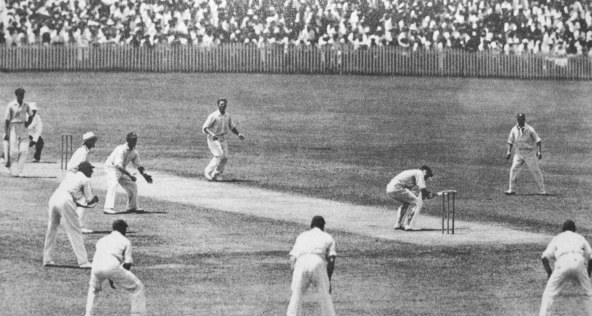
The Bodyline Series of 1932-33 is one of the most controversial chapters in the history of cricket. This Ashes series, played between England and Australia, witnessed a highly contentious strategy employed by the English team, forever changing the way cricket was played and perceived.
The Controversy: The term ‘Bodyline’ referred to a tactic devised by the English captain, Douglas Jardine, and his fast bowler, Harold Larwood. The strategy involved bowling the cricket ball at a high speed towards the batsman’s body, with the intention of intimidating and injuring them. It was a response to the exceptional batting skills of Australian cricketer Sir Donald Bradman, who had consistently dominated the English bowlers in previous matches.
The Impact: The Bodyline tactic, while effective in limiting Bradman’s scoring, sparked outrage and debates about the spirit of the game. It led to strained diplomatic relations between England and Australia, and there were even threats of canceling the series. The tension reached its peak during the Adelaide Test when English bowlers persistently targeted Australian batsmen.
The Statistics: Let’s take a look at some statistics from the Bodyline Series:
| Series Winner | Number of Matches Played | England Wins | Australia Wins | Draws |
|---|---|---|---|---|
| England | 5 | 4 | 1 | 0 |
England emerged as the winner of the series, with four victories out of the five matches played.
Aftermath: The Bodyline Series led to significant rule changes in cricket, including restrictions on the number of fielders on the leg side. It also strained relations between the two cricketing nations, although the controversy eventually subsided.
In conclusion, the Bodyline Series remains a controversial and watershed moment in cricket history, forever altering the dynamics of the game and raising questions about sportsmanship and ethics in competitive sports.
2. Underarm Bowling Incident (1981)
![Underarm Bowling incident of 1981 [Controversially Yours] - YouTube](https://whatcricket.com/wp-content/plugins/BlogPostBaba/images/2023/09/23/650f11d9584f7.jpg)
The Underarm Bowling Incident of 1981 is one of the most infamous moments in the history of cricket. It occurred during a One Day International (ODI) match between Australia and New Zealand on February 1, 1981, and left a lasting mark on the sport.
The Controversy: The incident unfolded in the final ball of the match. New Zealand needed six runs to tie the game, and the Australian captain, Greg Chappell, instructed his brother, Trevor Chappell, to bowl the last delivery underarm, effectively rolling the ball along the ground. This prevented the batsman, Brian McKechnie, from hitting a six, as it was virtually impossible to do so with an underarm delivery. The move was seen as a blatant attempt to manipulate the game and ensure victory for Australia.
Immediate Backlash: The underarm delivery was met with immediate outrage from the cricketing community and fans worldwide. It was considered against the spirit of the game and unsportsmanlike conduct. The New Zealand crowd booed the Australian team, and the incident strained relations between the two cricketing nations.
The Fallout: In the aftermath of the incident, there were calls for rule changes in cricket to prevent such tactics. The International Cricket Council (ICC) subsequently introduced rules that required all deliveries to be bowled overarm in ODIs. The Chappell brothers faced severe criticism, and Greg Chappell later admitted that it was a decision he regretted.
Legacy: The Underarm Bowling Incident remains a controversial and unforgettable moment in cricket history. It serves as a reminder of the importance of sportsmanship and fair play in the game. While cricket has seen many controversies over the years, this incident is often cited as one of the most notorious examples of gamesmanship in
Key Takeaways:
- The incident involved an underarm delivery in the final ball of a crucial ODI match.
- It was widely condemned for being against the spirit of the game.
- The ICC introduced new rules in response to prevent similar incidents.
- The incident left a lasting legacy in cricket history, emphasizing the importance of sportsmanship.
Conclusion: The Underarm Bowling Incident of 1981 serves as a cautionary tale in the world of cricket, reminding players and fans alike that the spirit of fair play should always be upheld, regardless of the stakes involved.
3. Monkeygate Scandal (2008)
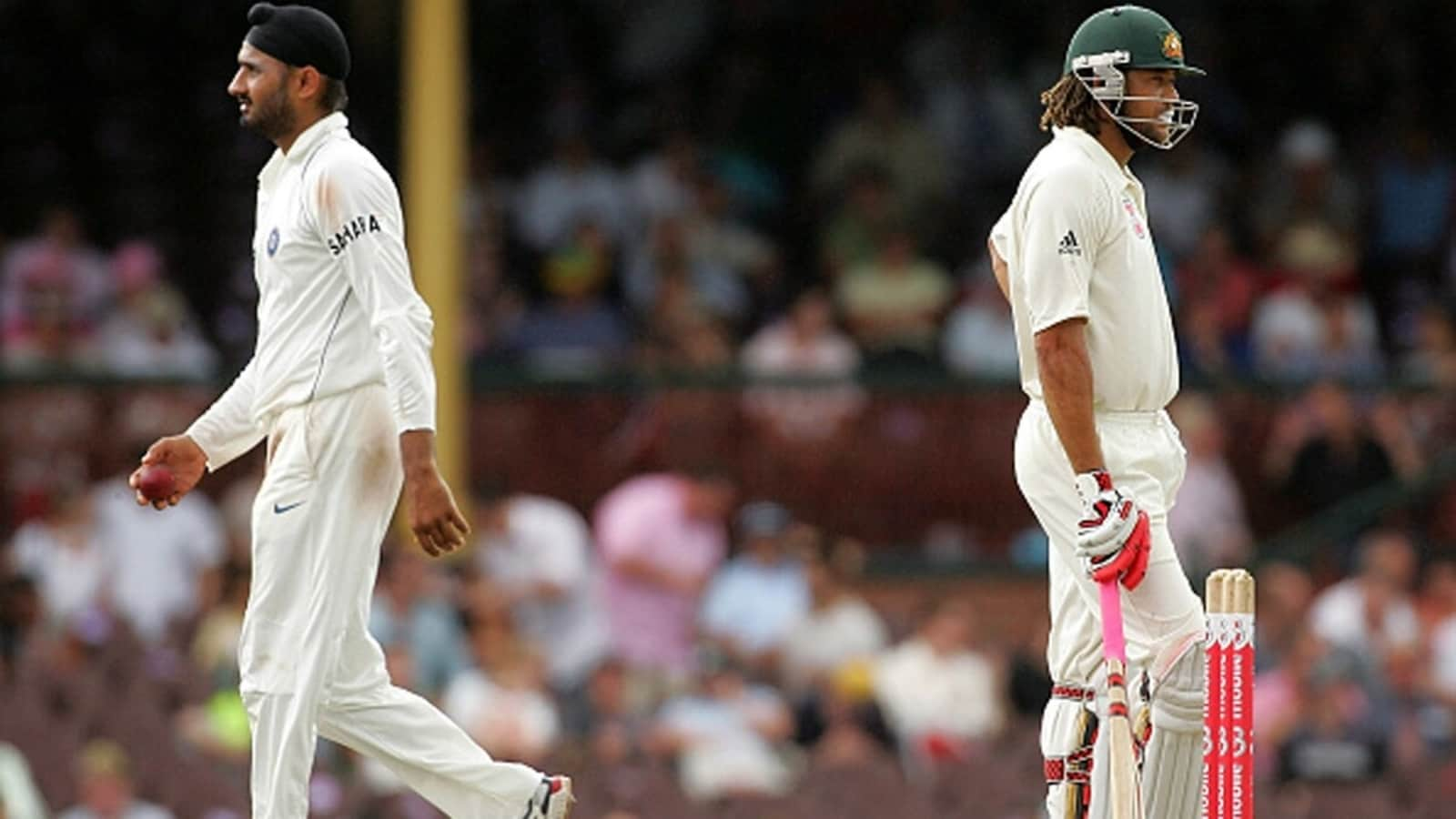
The Monkeygate Scandal of 2008 is one of the most controversial incidents in cricket, centered around the ill-tempered Test series between India and Australia. This episode, also known as the Harbhajan Singh-Andrew Symonds spat, created a storm in the cricketing world.
The Controversy: The incident occurred during the second Test match in Sydney. Harbhajan Singh, an Indian spinner, allegedly made racially offensive remarks against Andrew Symonds, an Australian all-rounder of West Indian descent. Symonds claimed that Harbhajan had called him a “monkey.” The Australian team lodged a formal complaint, and Harbhajan was charged with racially abusing Symonds.
The Fallout: The Monkeygate Scandal escalated quickly, with both teams taking strong positions. The Indian team threatened to pull out of the tour if Harbhajan was banned. The situation became highly charged, and the cricketing world watched anxiously as tensions flared. Eventually, Harbhajan was found guilty, fined 50% of his match fee, but not banned due to a lack of concrete evidence.
Impact on Relations: The incident strained relations between India and Australia, with diplomatic and political elements entering the fray. Cricketing authorities from both countries had to intervene to defuse the situation. The controversy left a lasting impact on the relationship between the two cricketing nations for years.
Legacy: The Monkeygate Scandal raised significant discussions about racism in cricket and the need for better mechanisms to handle such incidents. It also emphasized the importance of sportsmanship and maintaining the spirit of the game.
Key Takeaways:
- The scandal involved allegations of racial abuse by Harbhajan Singh against Andrew Symonds.
- The incident led to a heated confrontation between the Indian and Australian teams.
- Harbhajan was found guilty and fined, but not banned due to insufficient evidence.
- The incident strained relations between India and Australia and sparked discussions about racism in cricket.
- Cricket governing bodies introduced measures to address racial abuse and promote sportsmanship.
Conclusion: The Monkeygate Scandal serves as a reminder of the importance of maintaining the integrity and sportsmanship of cricket. It was a pivotal moment in cricket history that led to important discussions and measures to combat racial abuse in the sport.
4. Ball-Tampering Saga (2018)
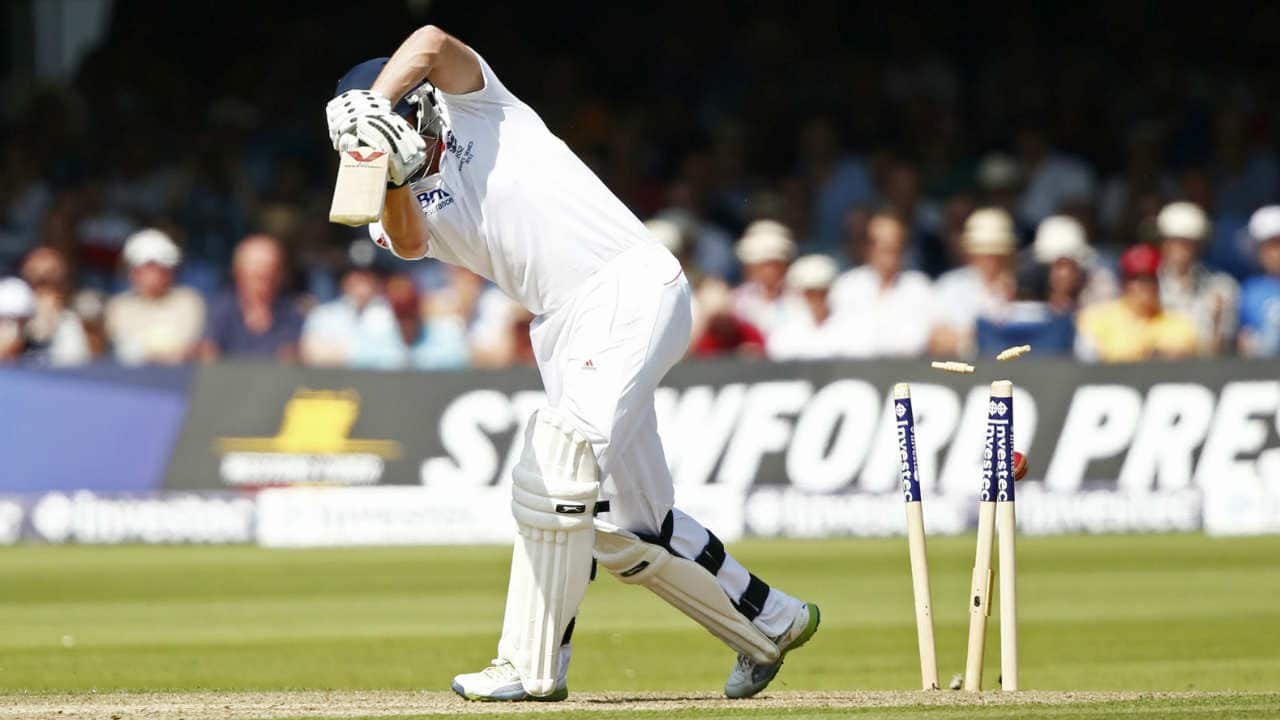
The Ball-Tampering Saga of 2018 is a dark chapter in the history of cricket, involving the Australian cricket team’s attempt to alter the condition of the cricket ball during a Test match against South Africa. This incident not only shook the cricketing world but also had severe repercussions for the individuals involved.
The Controversy: During the third Test match of the series in Cape Town, Australia’s opening batsman, Cameron Bancroft, was caught on camera attempting to use a piece of sandpaper to tamper with the cricket ball. Ball tampering is against the rules of cricket, as it can provide an unfair advantage to the bowling side. Captain Steve Smith and Vice-captain David Warner were later found to be involved in the plot, and they were accused of masterminding the tampering attempt.
The Fallout: The Ball-Tampering Saga had far-reaching consequences. Steve Smith and David Warner were banned from international and domestic cricket for one year, while Cameron Bancroft received a nine-month ban. Coach Darren Lehmann resigned from his position. The incident also had a significant impact on the team’s image and reputation, resulting in sponsors severing ties with Australian cricket.
Public Outcry: The incident was met with widespread outrage from fans, cricket pundits, and former players. It was seen as a breach of the spirit of the game and a betrayal of the values cricket holds dear. The Australian public was particularly disappointed in the team’s actions, and there were calls for a cultural overhaul within Australian cricket.
Reforms and Rebuilding: In the aftermath of the scandal, Australian cricket underwent a period of introspection and reform. Steps were taken to instill a greater sense of ethics and sportsmanship in the team’s culture. The ban on Smith, Warner, and Bancroft eventually ended, allowing them to return to international cricket with a newfound sense of responsibility.
Key Takeaways:
- The Ball-Tampering Saga involved an attempt to alter the condition of the cricket ball using sandpaper.
- Steve Smith, David Warner, and Cameron Bancroft were found guilty and received bans from cricket.
- The incident led to a major public outcry and calls for cultural reform in Australian cricket.
- Reforms were implemented to promote ethics and sportsmanship within the team.
Conclusion: The Ball-Tampering Saga serves as a stark reminder of the importance of upholding the values of fairness, integrity, and sportsmanship in cricket. It was a painful episode that ultimately forced Australian cricket to confront its shortcomings and work towards rebuilding its reputation on and off the field.
5. The Chucking Controversy (1995)
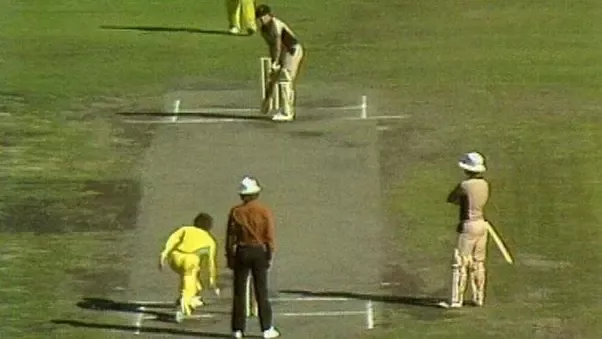
The Chucking Controversy of 1995 is a significant event in cricket history that revolved around the legality of bowling actions, particularly in the context of spin bowlers. It raised questions about the fairness of certain bowlers’ actions and led to rule changes and controversies that continue to shape modern cricket.
The Controversy: The controversy primarily centered around bowlers who were accused of “chucking,” a term used to describe an illegal bowling action where the bowler straightens their arm during the delivery, giving them an unfair advantage in generating spin and pace. This controversy came to the forefront during a Test series between Sri Lanka and Australia.
The Accused: The most prominent figure in this controversy was Muttiah Muralitharan, the Sri Lankan off-spin bowler who would later become one of the greatest bowlers in cricket history. His unique bowling action, which involved a noticeable bend in his arm during delivery, came under intense scrutiny and allegations of chucking.
The Debate: The Chucking Controversy sparked heated debates within the cricketing world. Supporters of Muralitharan argued that his action was unique but legitimate, while critics, including some former cricketers, claimed that his action gave him an unfair advantage. The debate often became acrimonious, with accusations and counter-accusations flying between cricketing nations.
Rule Changes: The controversy prompted cricket governing bodies, notably the International Cricket Council (ICC), to review and revise the laws regarding bowling actions. Stringent guidelines and technology-based assessments were introduced to determine the legality of a bowler’s action, including a maximum permissible degree of arm straightening (usually 15 degrees).
Impact: The Chucking Controversy had a profound impact on the game. It heightened awareness of the importance of fair play and maintaining a level playing field in cricket. It also played a role in transforming how bowlers’ actions are assessed, with technology playing a crucial role in the process.
Key Takeaways:
- The Chucking Controversy revolved around accusations of illegal bowling actions, particularly involving Muttiah Muralitharan.
- It led to intense debates and discussions within the cricketing community.
- Rule changes were introduced to assess the legality of bowling actions, setting a maximum permissible degree of arm straightening.
- The controversy underscored the importance of fair play and ethics in cricket.
Conclusion: The Chucking Controversy of 1995 remains a pivotal moment in cricket’s history, prompting changes in how the sport addresses and evaluates bowling actions. It serves as a reminder that cricket’s commitment to fair play and integrity continues to evolve as the game itself progresses.
6. Spot-Fixing Scandals (Various)
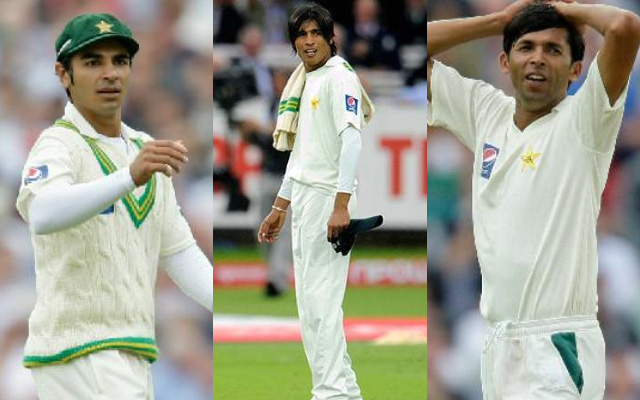
Spot-fixing scandals have plagued the world of cricket on multiple occasions, tarnishing the sport’s reputation and raising concerns about the integrity of the game. Spot-fixing involves manipulating specific events within a match for illegal betting purposes, often without significantly affecting the final outcome of the game. Here, we look at some of the most notable spot-fixing scandals in cricket history.
1. The Pakistan Spot-Fixing Scandal (2010)
The Controversy: In 2010, during a Test match between England and Pakistan at Lord’s, three Pakistani cricketers, Salman Butt, Mohammad Amir, and Mohammad Asif, were caught in a spot-fixing scandal. They were found guilty of deliberately bowling no-balls at specific moments in the game, as part of a pre-arranged plan with a bookmaker. The scandal came to light through an undercover sting operation conducted by a British tabloid.
Consequences: The scandal led to lengthy bans for the three players, with Butt receiving a ten-year ban (five years suspended), Amir a five-year ban, and Asif a seven-year ban. It also resulted in damage to Pakistan’s cricketing reputation and a renewed focus on anti-corruption measures in the sport.
2. The IPL Spot-Fixing Scandal (2013)
The Controversy: The Indian Premier League (IPL) spot-fixing scandal of 2013 sent shockwaves through the cricketing world. Several players and team officials, including Sreesanth, Ajit Chandila, and Ankeet Chavan of the Rajasthan Royals, were accused of spot-fixing matches. Allegations also extended to bookmakers and team owners.
Consequences: The scandal led to the suspension and subsequent bans of several players, including life bans for Sreesanth and Chavan. It raised questions about the adequacy of anti-corruption measures in T20 leagues like the IPL and prompted stricter enforcement of the rules.
3. The Bangladesh Premier League (BPL) Spot-Fixing Scandal (2013)
The Controversy: The inaugural season of the Bangladesh Premier League (BPL) in 2013 was marred by a spot-fixing scandal. Several players, including Mohammad Ashraful, were implicated in fixing aspects of matches. Ashraful, a former captain of the Bangladesh national team, confessed to his involvement in spot-fixing.
Consequences: Ashraful received an eight-year ban from cricket, while other players involved faced varying degrees of punishment. The BPL spot-fixing scandal highlighted the need for vigilance in emerging T20 leagues and reinforced the importance of educating players about the consequences of corruption.
Conclusion: Spot-fixing scandals have cast a shadow over cricket, threatening the sport’s credibility and fair play. Each scandal serves as a reminder of the ongoing battle against corruption in cricket and the need for robust anti-corruption measures to protect the integrity of the game.
7. Mankading Controversies (Various)

Mankading is a mode of dismissal in cricket where a bowler runs out the non-striking batsman if they leave their crease before the ball is bowled. This action, named after Indian cricketer Vinoo Mankad, has sparked several controversies over the years. Here are some notable instances of Mankading controversies in cricket:
1. Vinoo Mankad (1947)
The Controversy: The term “Mankading” originated during India’s tour of Australia in 1947 when Vinoo Mankad, the Indian all-rounder, ran out Australian batsman Bill Brown in this manner during a Test match. The action was deemed unsporting by some, although it was within the laws of the game.
Consequences: Despite the controversy, Vinoo Mankad’s name became associated with this form of dismissal, and the term “Mankading” has since been used to describe such run-outs.
2. Kapil Dev (1992)
The Controversy: During an ODI match between India and England in 1992, Indian captain Kapil Dev warned English batsman Peter Kirsten for backing up too far at the non-striker’s end. Kirsten continued to leave the crease early, and Kapil Dev Mankaded him, leading to a heated debate.
Consequences: Kapil Dev’s action divided opinions, with some supporting his decision to uphold the rules, while others criticized him for lacking sportsmanship.
3. Jos Buttler (2019)
The Controversy: One of the most recent Mankading controversies occurred during an IPL match in 2019 when Rajasthan Royals’ Jos Buttler was Mankaded by Kings XI Punjab’s Ravichandran Ashwin. Buttler had repeatedly left his crease before the ball was bowled.
Consequences: Ashwin’s Mankading of Buttler sparked widespread debate in the cricketing world. While it was within the laws, some argued that it was against the spirit of the game. The incident fueled discussions about the ethics of Mankading in the T20 format.
4. Manjural Islam Rana (2004)
The Controversy: In an ODI between Bangladesh and Pakistan in 2004, Pakistani bowler Shoaib Malik Mankaded Bangladeshi batsman Manjural Islam Rana. The incident caused outrage and heated exchanges between the two teams.
Consequences: The controversy highlighted the cultural differences in cricket, with some teams viewing Mankading as unacceptable, while others considered it a legitimate mode of dismissal.
Conclusion: Mankading controversies remain a divisive issue in cricket, with debates about sportsmanship and adherence to the laws of the game. While Mankading is a legal form of dismissal, it continues to generate discussion and disagreement among players, fans, and pundits.
FAQ
Q1: What are some infamous match-fixing scandals in cricket history?
Match-fixing scandals have marred the integrity of cricket over the years. One of the most notorious incidents involved the Hansie Cronje scandal in 2000, where the South African captain admitted to accepting money from bookmakers to manipulate matches. Another significant scandal was the Pakistan spot-fixing case in 2010, which led to bans for players Salman Butt, Mohammad Amir, and Mohammad Asif.
Q2: Can you explain some prominent ball-tampering incidents?
Ball-tampering controversies have stirred debates in cricket. The incident involving Australian cricketers Steve Smith, David Warner, and Cameron Bancroft during a Test match against South Africa in 2018 gained international attention. They were caught tampering with the ball using sandpaper, leading to suspensions and fines.
Q3: What are some umpiring controversies that created a buzz?
Umpiring decisions often spark controversies. The 2008 Sydney Test between Australia and India witnessed several contentious decisions, including the famous ‘Monkeygate’ incident involving Harbhajan Singh and Andrew Symonds. Another notable controversy was during the 2019 World Cup final when England was awarded an extra run due to an overthrown ball deflecting off Ben Stokes’ bat, which had crossed the boundary.
Q4: Could you provide examples of player behavior controversies in cricket?
Player behavior controversies have stained the spirit of the game. Shahid Afridi’s infamous ball-biting incident in 2010, where he bit the ball during a match against Australia, caused an uproar. Additionally, incidents of sledging, aggressive behavior, and heated exchanges between players have been a cause for concern, leading to disciplinary actions in various matches.
Q5: How does cricket governing bodies address these controversies?
Cricket governing bodies, such as the International Cricket Council (ICC), have implemented strict codes of conduct and penalties to curb controversies. Players involved in match-fixing or ball-tampering face lengthy suspensions and fines. Umpiring decisions are reviewed using technology like the Decision Review System (DRS) to minimize errors. Additionally, players engaging in unsportsmanlike behavior are penalized, promoting fair play and maintaining the game’s integrity.
Conclusion
Reflecting on the most controversial cricket moments of all time, it becomes evident that the sport, while celebrated for its sportsmanship and skill, has also been marred by various incidents that have sparked debates and discussions across the globe. From match-fixing scandals that shook the very foundation of cricketing integrity to ball-tampering incidents that raised questions about fair play, the sport has witnessed its fair share of controversies.
Umpiring controversies have also been a significant point of contention. The decisions made on the field have often led to heated arguments and debates among players, fans, and experts. In some cases, these decisions have even altered the course of matches and series, leaving a lasting impact on the sport’s history.
Furthermore, player behavior controversies have cast shadows on the otherwise glorious careers of some cricketers. Instances of on-field arguments, sledging, and misconduct have not only tarnished individual reputations but have also brought disrepute to the teams they represented.
As we navigate through these controversial moments, it is essential to acknowledge that they are part of the sport’s complex tapestry. Cricket, like any other competitive endeavor, is not immune to human errors, emotions, and temptations. However, it is crucial to address these issues, learn from them, and strive for a cleaner, fairer, and more respectful game.
In conclusion, while controversies have undeniably left an indelible mark on the history of cricket, the sport continues to evolve. The governing bodies, players, and fans must work together to uphold the spirit of cricket and ensure that it remains a source of inspiration and joy for generations to come.
